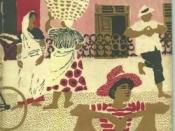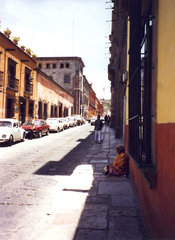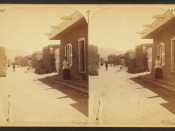Representations of Masculinity and Femininity in Miguel Street
It has been said about V.S. Naipaul's novel Miguel Street that 'One of the
recurrent themes... is the ideal of manliness' (Kelly 19). To help put into focus what
manliness is, it is important to establish a definition for masculinity as well as its
opposite, femininity. Masculinity is defined as 'Having qualities regarded as
characteristic of men and boys, as strength, vigor, boldness, etc' while femininity is
defined as 'Having qualities regarded as characteristic of women and girls, as gentleness,
weakness, delicacy, modesty, etc' (Webster). The charcters in Miguel Street have been
ingrained with the pre- conceived notions of the roles that Trinidadian society dictates for
men and women. Naipaul not only uses these notions to show the differences of the
sexes, but takes another step in telling anecdotes of characters showing their anti-
masculine and anti- feminine features. This will lead to the discovery that our definitions
of masculinity and femininity prove that those characteristics apply to the opposite sex in
which the women often act like men, and the men often act like women.
All of this will
be discussed through looking at both male and female characters in the book as well as
the boy narrator of the book.
Finding examples of manliness are found with great ease considering that 12 of
the 17 stories in some way deal with the theme of manliness (Thieme 24). It doesnt take
long before the first example, a carpenter named Popo, is introduced. In the chapter titled
'The Thing Without A Name' we are told that 'Popo never made any money. His wife
used to go out and work and this was easy , because they had no children. Popo said '
Women and them like work. Man not made for...



V.S. Naipaul's novel Miguel Street
i just read this because i am a trinidain just like V.S. Naipaul, it s was pretty good, found it intersting because i am a trinidian and here are forigners mking comments about our way of life when i am sure there are not a custom to it. but all in all it was petty good and every one should come to trinidad and tobago for a vaction lol i give it a 8.7 out of ten
6 out of 7 people found this comment useful.